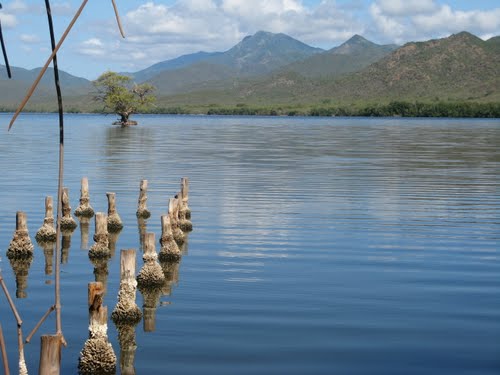La Gran Piedra y Baconao The eastern region of Cuba is emblematic not only for its history but also for the magic of its nature. There the geological whims are combined with the creations of man to surprise locals and visitors.
This is what happens with the Gran Piedra, which is 51 meters long and between 25 and 30 meters wide. The huge rock is of volcanic origin and constitutes the highest point of a mountain located 1225 meters above sea level. Its location makes it a vantage point for those who wish to appreciate the immensity of the Sierra Maestra.
It is distinguished by its contrast with flora and fauna. In addition, its peculiar dimensions make it the largest in the insular Caribbean.
There are several versions about its origin and of course several popular stories are inspired by it. The legends are mixed with the mystical style of the place along with the results of investigations. Several specialists have confirmed the formation of the Great Stone due to the impact of a meteorite millions of years ago, others consider it the result of the explosion of an underwater volcano.
This area is also famous for the legend of Baconao that currently not only gives its name to a lagoon but also to a park declared a World Biosphere Reserve by UNESCO.
The natural reservoir has four square kilometers, houses a crocodile farm and functions as a natural setting for several sculptures that reproduce a Taino village.
Through those places you can still hear the story of an aboriginal child to whom the Baconá tree granted him certain privileges. According to legend, the child was given the power to play music with the snails of the lagoon and was soon named Baconao.
They say that the chosen one was a skilled fisherman and swimmer, as well as a great player of batos (Aboriginal competition similar to baseball). However, he spent hours and hours sitting in the roots of the tree composing beautiful melodies. All members of the Taino village were fascinated with their creations.
One day the boy went out to perform his daily routine and never returned. In his honor the lagoon bears his name, as does the park around him: an area of attractive landscapes where you can still hear the rhythm of the snails of Baconao, combined with the breeze.
LA GRAN PIEDRA, MAGIA DE LA NATURALEZA. LA LEYENDA DE BACONAO.
La Gran Piedra y BaconaoLa región oriental de Cuba es emblemática no solo por su historia sino también por la magia de su naturaleza. Allí los caprichos geológicos se combinan con las creaciones del hombre para sorpresa de pobladores y visitantes.
Así sucede con la Gran Piedra que cuenta con 51 metros de largo y entre 25 y 30 metros de ancho. La enorme roca es de origen volcánico y constituye el punto culminante de una montaña situada a 1225 metros de altura sobre el nivel del mar. Su ubicación la convierte en un mirador para quienes deseen apreciar la inmensidad de la Sierra Maestra.
Se distingue por su contraste con la flora y la fauna. Además, sus peculiares dimensiones la convierten en la de mayor tamaño en el Caribe insular.
Existen varias versiones sobre su origen y por supuesto que varias historias populares se inspiran en ello. Las leyendas se mezclan con el estilo místico del lugar junto a los resultados de investigaciones. Varios especialistas han confirmado la formación de la Gran Piedra debido al impacto de un meteorito hace millones de años, otros la consideran resultado de la explosión de un volcán submarino.
Esta zona también es famosa por la leyenda de Baconao que actualmente no solo le da nombre a una laguna sino también a un parque declarado Reserva Mundial de la Biosfera por la UNESCO.
El embalse natural cuenta con cuatro kilómetros cuadrados, alberga un criadero de cocodrilos y funciona como escenario natural para varias esculturas que reproducen una aldea taína.
Por aquellos parajes todavía puede escucharse la historia de un niño aborigen al que el árbol Baconá le otorgó ciertos privilegios. Según la leyenda, al pequeño se le atribuyó el poder de tocar música con los caracoles de la laguna y pronto lo nombraron Baconao.
Dicen que el elegido era un hábil pescador y nadador, así como un gran jugador de batos (competencia aborigen semejante al béisbol). Sin embargo, pasaba horas y horas sentado en las raíces del árbol componiendo bellas melodías. Todos los miembros de la aldea taína estaban fascinados con sus creaciones.
Un día el niño salió a realizar su rutina diaria y nunca más regresó. En su honor la laguna lleva su nombre, al igual que el parque a su alrededor: una zona de atractivos paisajes donde todavía puede escucharse el ritmo de los caracoles de Baconao, combinado con la brisa.
Agencies/Rad.Encyclopedia/Laura Barrera/Internet Photos/ Arnoldo Varona/ TheCubanHistory.com
THE CUBAN HISTORY, HOLLYWOOD.








